Abstract
Duodeno-colonic fistula is an enterocolonic fistula that occurs as a complication of Crohn's disease. Symptoms of duodeno-colonic fistula are similar to those of Crohn's disease, such as weight loss and diarrhea. The treatment of choice is surgery, although medical treatment may also be considered. However, surgery is recommended when all available medical therapies have been ineffective. In this case, we report a secondary duodeno-colonic fistula due to Crohn's disease that was temporarily managed by an endoscopic procedure with a detached endoloop and hemoclips as a bridging therapy to final surgical repair.
References
1. Farmer RG, Hawk WA, Turnbull RB Jr. Clinical patterns in Crohn's disease: a statistical study of 615 cases. Gastroenterology. 1975; 68:627–635.

2. Nielsen OH, Rogler G, Hahnloser D, Thomsen OØ. Diagnosis and management of fistulizing Crohn's disease. Nat Clin Pract Gastroenterol Hepatol. 2009; 6:92–106.

3. Ye BD, Yang SK, Cho YK, et al. Clinical features and long-term prognosis of Crohn's disease in Korea. Scand J Gastroenterol. 2010; 45:1178–1185.

4. American Gastroenterological Association Clinical Practice Committee. American Gastroenterological Association medical position statement: perianal Crohn's disease. Gastroenterology. 2003; 125:1503–1507.
5. Judge TA, Lichtenstein GR. Treatment of fistulizing Crohn's disease. Gastroenterol Clin North Am. 2004; 33:421–54. xi-xii.

6. ElHajj II, Abdul-Baki H, El-Zahabi LM, Barada KA. Primary colo-duodenal fistula in Crohn's disease. Dig Dis Sci. 2007; 52:59–63.
7. Klein S, Greenstein AJ, Sachar DB. Duodenal fistulas in Crohn's disease. J Clin Gastroenterol. 1987; 9:46–49.

8. Greenstein AJ, Kark AE, Dreiling DA. Crohn's disease of the colon. I. Fistula in Crohn's disease of the colon, classification presenting features and management in 63 patients. Am J Gastroenterol. 1974; 62:419–429.
9. Pichney LS, Fantry GT, Graham SM. Gastrocolic and duodenocolic fistulas in Crohn's disease. J Clin Gastroenterol. 1992; 15:205–211.

10. Benn M, Nielsen FT, Antonsen HK. Benign duodenocolic fistula. A case presenting with acidosis. Dig Dis Sci. 1997; 42:345–347.
11. Uza N, Nakase H, Ueno S, et al. The effect of medical treatment on patients with fistulizing Crohn's disease: a retrospective study. Intern Med. 2008; 47:193–199.

12. Ye BD, Yang SK, Shin SJ, et al. IBD Study Group of the Korean Association for the Study of the Intestinal Diseases. Guidelines for the management of Crohn's disease. Korean J Gastroenterol. 2012; 59:141–179.

13. Levy C, Tremaine WJ. Management of internal fistulas in Crohn's disease. Inflamm Bowel Dis. 2002; 8:106–111.

14. Parsi MA, Lashner BA, Achkar JP, Connor JT, Brzezinski A. Type of fistula determines response to infliximab in patients with fistulous Crohn's disease. Am J Gastroenterol. 2004; 99:445–449.

15. von Renteln D, Denzer UW, Schachschal G, Anders M, Groth S, Rösch T. Endoscopic closure of GI fistulae by using an over-the-scope clip (with videos). Gastrointest Endosc. 2010; 72:1289–1296.

Fig. 1.
Gastrografin hypotonic duo-denograph at admission. Fistula tract in the second portion of the duodenum was noted (arrows). The size of fistula opening measured approximately 1.5 cm.
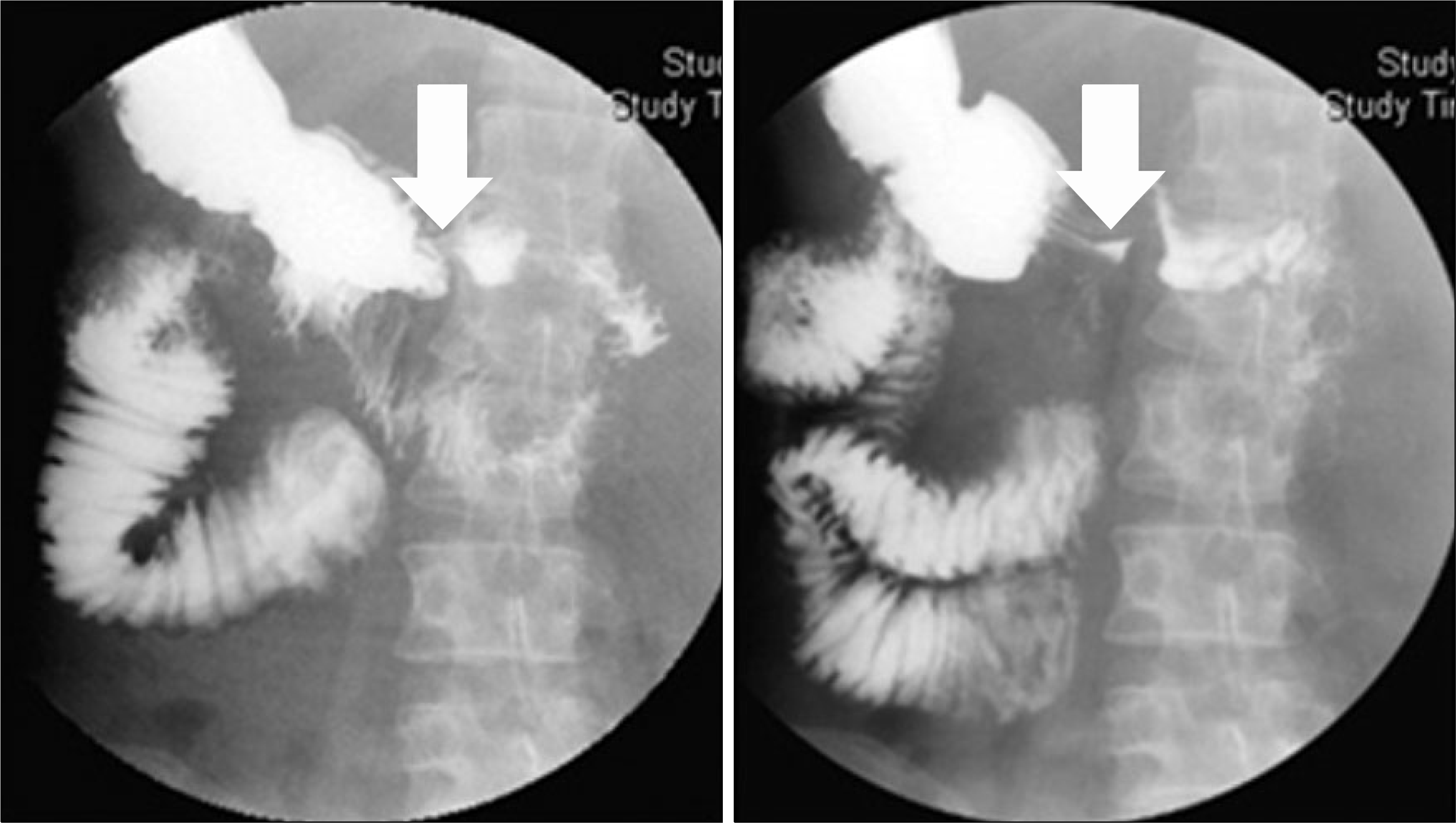
Fig. 2.
Computed tomography scan of abdomen and pelvis at admission. Mucosal enhancement and irregular wall thickening was present in the hepatic flexure of colon due to Crohn's disease involvement. Fistula formation between the hepatic flexure of the colon and the duodenal second portion was founded (arrows).

Fig. 3.
(A) Esophagogastroduodenoscopy was performed at the first admission. A fistula tract was identified in the duodenal second portion. (B) Endoscopic procedure was performed for closing of fistula. Hemoclipping around the fistula was performed eight times and the fistula was occluded with a medium sized detachable snare.
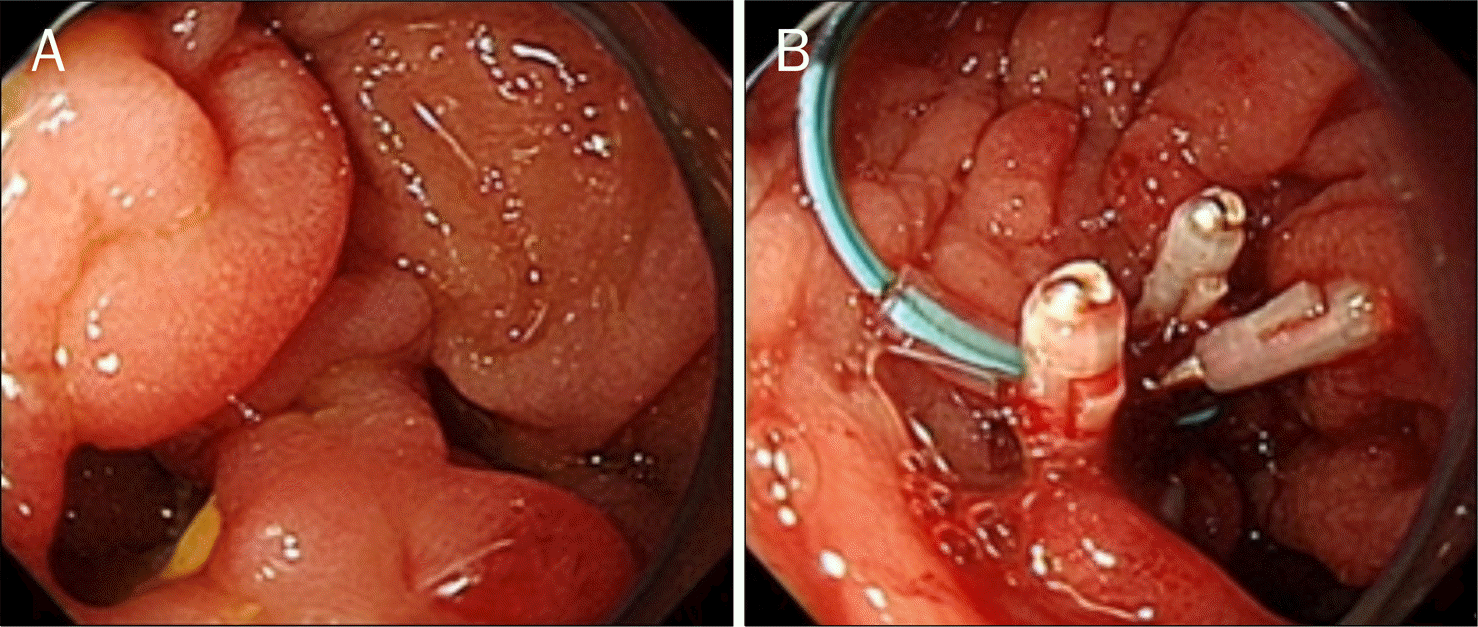
Fig. 4.
Endoscopic findings performed at the second admission. Duodeno-colonic fistula was noted recurrently and all of the hemoclips and the detachable snare used in the previous treatment disappeared. The fistula was closed by hemoclipping six times.
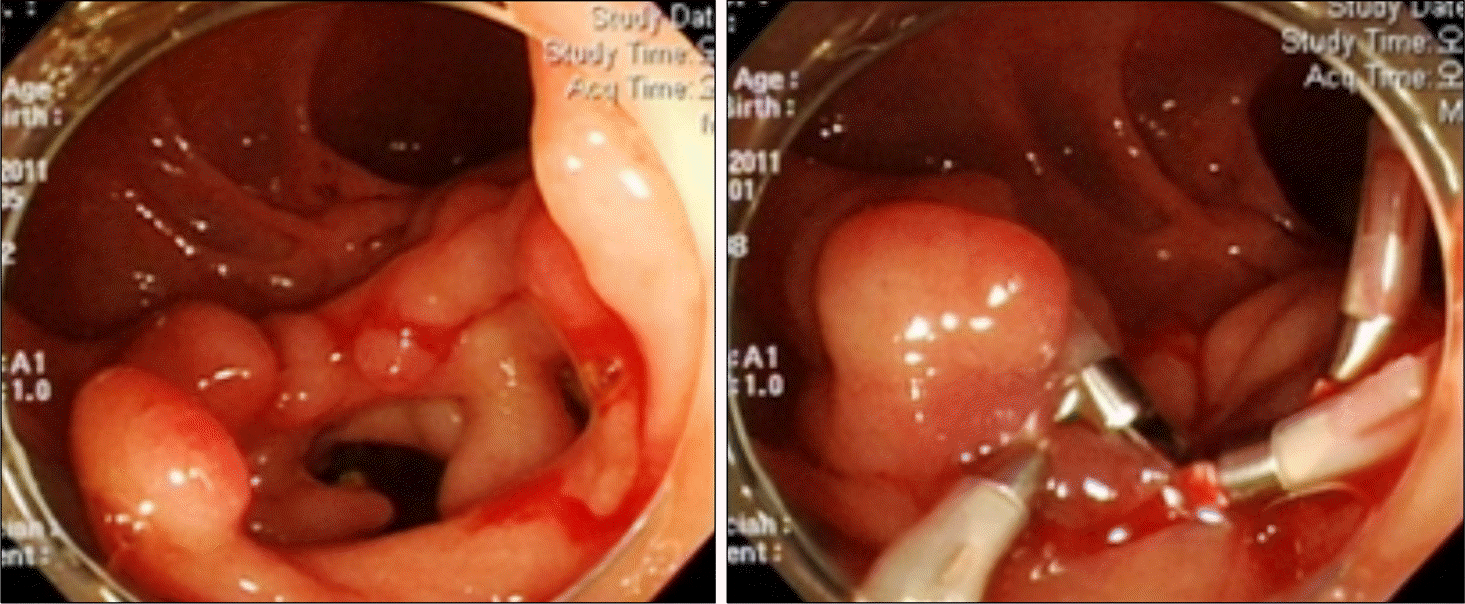




 PDF
PDF ePub
ePub Citation
Citation Print
Print


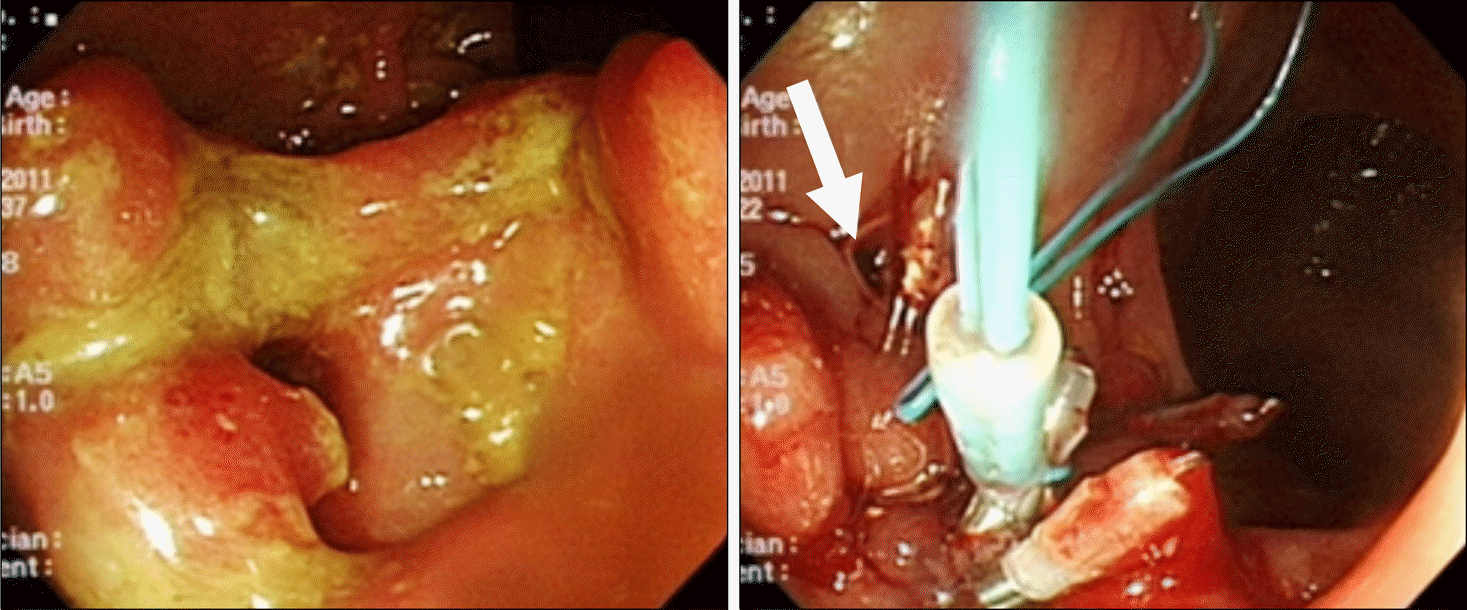
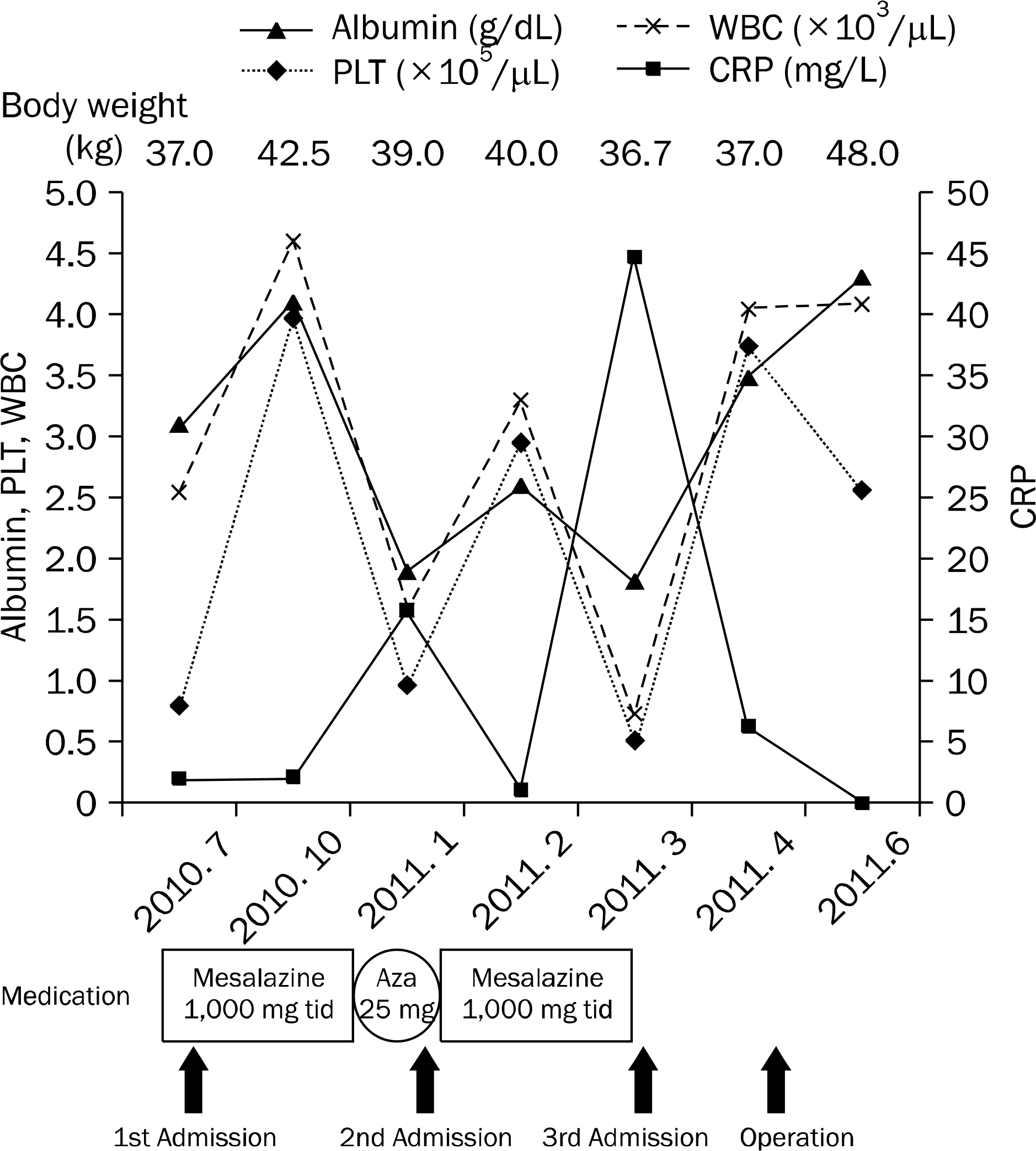
 XML Download
XML Download